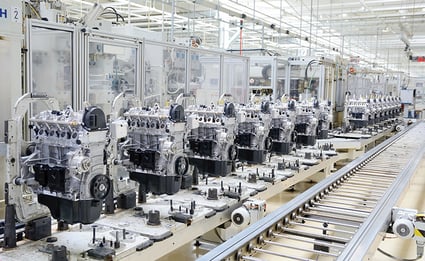Improve the Agility of Your Production Planning through Digitalization
Nancy Sarpolis - February 08, 2022

A scheduler for a mid-sized manufacturing company recently lamented about disconnects between production and distribution that were negatively impacting customer orders. Trucks were arriving at the dock for a load when the product hadn’t even been run yet, due to raw material shortages and other delays.
Production schedulers are increasingly at the center of today’s supply chain volatility. But growing complexity means planners who are still using spreadsheets to optimize their organizations’ machines, personnel and other resources are at a disadvantage. Despite long hours and often-herculean efforts, creating each production sequence now involves so many variables that the odds of a human planner finding the optimal path for each product are extremely low.
Digitalization can help manufacturers of all sizes gain greater visibility into their operations for better, more agile planning, streamlined processes and improved efficiency.
Collecting and connecting data
Production schedulers need a complete view of every resource within the organization to optimize shop floor manufacturing. That means harnessing data that’s already being collected—from applications that track incoming orders and materials shipments to sensors that monitor machine usage and inventory levels—as well as any additional data needed for a comprehensive, end-to-end view of operations.
New flexible information systems technologies for supply chain management weave a “digital thread” that connects disparate business functions and makes processes and data visible in real time. This puts the power in planners’ hands, allowing for quicker reaction times and greater flexibility in managing production systems—which is becoming increasingly more important as demand and customer expectations grow. Technologies that can easily be adapted to an organization’s own applications or that interface with existing standard software provide faster, more seamless implementation.
Enabling agile planning
In an automated, digital environment, the complexity of job shop scheduling is transformed into an agile planning process that anticipates and responds in real time to changing conditions within the manufacturing pipeline. New incoming orders can be optimally planned on a daily basis and in specified target weeks. Delayed raw material shipments and other bottlenecks are identified in real-time, giving planners enough time to adjust production programs and timetables. Rules, restraints, part availabilities and production facility capacities can also be altered at any point during planned production programs to meet delivery schedules and avoid disruptions. With each new order, the total volume can be optimized in the scheduling process, thus ensuring a lean and efficient production schedule.
A precision gear manufacturer that recently implemented optimized production planning, for example, reports achieving a more stable planning and production process: “Detailed scheduling helps us recognize bottlenecks in our production at an early stage and to avoid downtimes of our employees and machines.”
Building a better forecast
Likewise, production planners can proactively explore “what if” scenarios. The ease of data maintenance and sharing within a job shop scheduling solution allows schedulers to compare different job allocation scenarios based on actual orders or customer inquiries to make informed, productivity-based decisions on how jobs should be allocated and the resources necessary to complete those jobs.
As production planners seek to tame the “new normal” of 21st century global supply chains, they need powerful digital tools that can turn data into insight more quickly and comprehensively than ever before. Implementing flexible information systems technologies for supply chain management can lead to more accurate forecasts, better decision-making, improved planning, and optimized production.
If you want to learn more get your Guide to Transformation of Manufacturing Processes
In this Guide you will learn:
-
Emerging challenges in the modern automotive industry
-
How global OEMs can adapt to new realities
-
How decentralized digital systems power smarter planning processes
-
How flexis can support flexible supply chain transformation
LATEST POSTS
- Understand Circular Economy in The Manufacturing Industry
- How Can Industry 4.0 IT Integration Be Achieved Smoothly?
- The Significance of Order Sequencing in Discrete Manufacturing
- How to improve your Supply Chain Management: The Power of Control Towers
- Optimizing Human Resource Scheduling in Manufacturing: A Technological Approach



